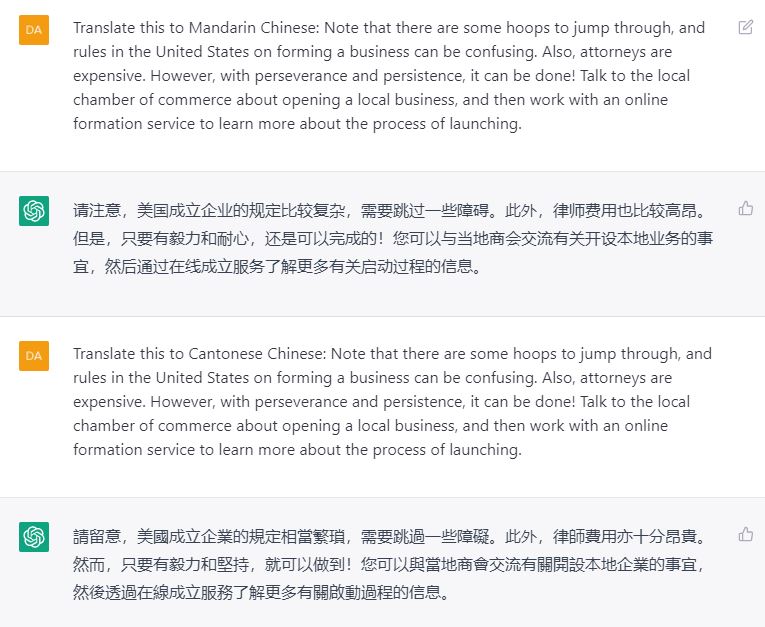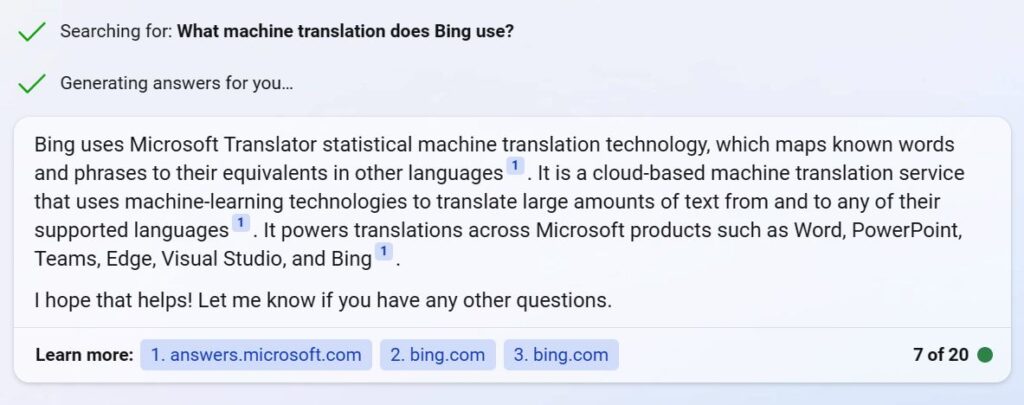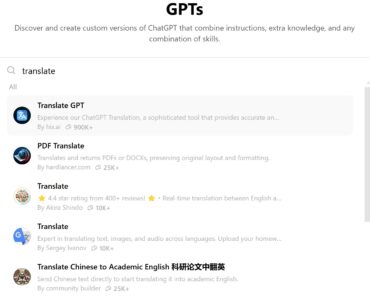by David Grunwald
ChatGPT is still big news, even six months after it launched. The Italian government has banned its use in Italy. In Israel, a class action lawsuit has been filed against OpenAI, the creator of ChatGPT. And Germany is also considering a ban on ChatGPT.
Having said all of that, ChatGPT is emerging as a very useful translation tool. And it provides some features that are not available in industry staples such as Google Translate, DeepL and Microsoft Translator. It appears to provide solutions for some of the things that traditional MT can’t do.
What can ChatGPT translation do that Google Translate can’t?
Here are some features ChatGPT has and which the main machine translation software does not.
Translate in Context
Here are some queries that you can use in ChatGPT to provide it with context. ChatGPT adjusts the translation based on your inputs.
Translate [this text] to French at a 5th grade level
Translate this to English in layman terms: [this text]
Summarize this text in English: [this text]
This text is from a medical report
Play around with such queries and see how the results vary. The beauty is that you can use simple language to guide ChatGPT into providing you with a customized translation.
Real Gisting Translation
Years ago, when machine translation was far more primitive than today, it was accepted that MT is a good solution for gisting. Meaning that it is good enough to understand the general meaning but not much more than that.
ChapGPT seems to have gone one step further and allows you to summarize a long text written in a another language to your own language. Here is an example of a post that appears in today’s French newspaper LeMonde.

Google Translate provides you with a literal translation, forcing you to wade through the entire article. ChatGPT reads the article for you and provides a concise summary. It literally cuts to the chase and saves you time by providing the nitty-gritty. Here is what I inputted:
Summarize this in English: https://www.lemonde.fr/football ……..
The article discusses Lionel Messi’s return to Paris after winning the World Cup with Argentina and highlights some of the questions surrounding his return to PSG. The article explores whether Messi will be well received by the PSG fans, given some controversial celebrations by his Argentine teammates targeting Kylian Mbappé. The article also discusses the tactical implications of Messi’s return for the PSG team, particularly in light of injuries to key players. Overall, the article highlights the excitement and anticipation surrounding Messi’s return to PSG and the many questions that remain about his role and impact on the team.
ChapGPT supports regional translation preferences
Google Translate and the other traditional MT systems do not allow for regional differences in language. For example: it does not differentiate between Canadian and European French, Brazilian and European Portuguese, Mandarin and Cantonese Chinese. But ChatGPT does. Just use simple queries like these:
Translate this to Canadian French: [this text]
Translate this to Brazilian Portuguese: [this text]

In the above example, notice that the translation to Mandarin Chinese and Cantonese Chinese are not the same. Google Translate and DeepL can’t do this (at least not yet).
Load custom term lists and translation memories
Try entering your termbases and MTs into ChaptGPT. Then request the translation. You will notice that the resulting translation will follow your preferences.
For example:
Use the following translations to translate English to Italian medical text:
Then, enter your aligned text (term list or TM) using equal signs between aligned terms/TUs. Then, request the translation from ChatGPT:
Translate this medical text to Italian:
You will notice that the translation comes out using your matches. Compare this to a plain-vanilla ChatGPT translation and the result is markedly different.
Why isn’t Bing using ChatGPT for translation?
As everyone knows, Microsoft has invested billions in ChapGPT’s parent company OpenAI. And Microsoft has integrated ChapGPT into its search engine Bing. But not for translation. Microsoft still uses its statistical machine translation software for translation. How do I know this? I asked Bing and this is the response I received.

So, if you are looking to try some of the nifty translation tricks I mentioned in this post-don’t try them in Bing Chat (which uses ChatGPT). You will need to try them in ChatGPT directly. As proof to this, here is the response that Bing Chat gave me when I asked for a summary of the Messi article.

When I asked Bing why it has not integrated ChatGPT for translation, here is the response I received.

Is the tool which is presently integrated into Bing indeed more powerful than ChatGPT? Maybe not. Maybe Microsoft is not ready to relinquish its own tool which it has labored on for years and into which it invested huge sums of money.
Summary
ChatGPT brings into focus some of the future directions which AI will take machine translation into. My prediction is that ChatGPT will change the way we use MT and we will see the results in the not-too-distant future.





